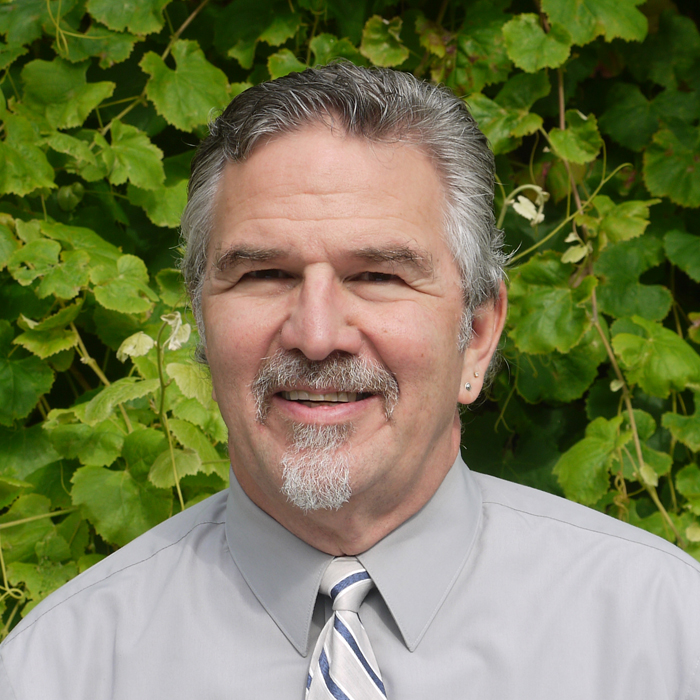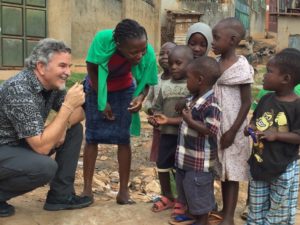
Rev. VICTOR KAZANJIAN
Executive Director at the United Religions Initiative
When many in our society see increased polarization, Rev. Victor Kazanjian, United Religions Initiative (URI) Executive Director is full of optimism, “At time of deepening division and growing conflict nationally and globally, every day I hear stories of growing numbers of people of different beliefs and cultures united in working together for peace, justice and healing in their communities.” Rev. Kazanjian’s role, which he assumed in 2013 as the result of an exhaustive search by DRG, is something of a calling, a continuation of a lifelong commitment to religious pluralism, justice, and peace. “I have what I consider to be the best job in the world”, he says.

DRG Search identified Rev. Victor Kazanjian as the spiritually rooted and sage leader who would guide the organization through its second generation of growth. In the 5 years since Rev. Kazanjian took the helm of URI, which was originally founded in 2000 by a global grassroots community, the organization has matured, undergoing strategic planning and assessment that has strengthened it while keeping it grounded to URI’s core values of spiritual authenticity and nonviolent conflict resolution.
Learn more about Rev. Kazanjian’s approach to everything from organizational change and leadership to conflict resolution.
-
What are some of the core principles and values that guide your work and define your approach to leadership?
I believe in shared leadership. This means that the role of the Executive Director is to engage the team in such a way that everyone feels a shared sense of responsibility and accountability for the work. In a shared leadership model, the Executive Director plays a key facilitative role, inviting others to join in a process where work is seen as better engaged through collaboration. Too many organizations are structured as, or default to, separate departments that are siloed from one another, which not only leads to poor efficiency but also missed opportunities for creativity. Shared leadership also requires trust in colleagues to handle their areas without the leader having to be part of every decision, and support of the decisions made by the staff. Good leaders understand that if a team member struggles, it is often because they have not been given the right tools or support to succeed.
I also believe that moments of tension, struggle, crisis and conflict are moments of extraordinary opportunity for learning about the organization and the work at hand. So many organizations and leaders are conflict adverse, seeing conflict as an indication of failure. I see conflict and struggle as an essential part of the human experience. The key is to engage these moments as opportunities for creative challenge, and that takes humility and collaboration. When workplaces operate out of anxiety or fear of failure, creativity is choked off and performance diminished.
I see leaders as often falling into two categories – anxiety-producing or anxiety-reducing. Leaders who are anxiety-producing create a climate of walking on eggshells and second guessing. The system around an anxiety-producing leader is often rigid and fragile and people tend to work in isolation or to be tenuous in their work for fear of making mistakes. Leaders who are anxiety-reducing encourage creativity and experimentation without fear of mistakes or failure. They challenge their team to take risks and bring alternative perspectives. They are also attentive to the environment in which their team is working, and alert to the levels of stress among their team. Anxiety-reducing leaders respond in high stress moments by helping the team to take a deep breath, pull back, gain perspective, and meet the challenge with positive energy. I try, although not always successfully, to be an anxiety-reducing leader.
Good leaders understand the relationship between stress and resilience. I see the key to this as developing resilience so that stress does not cause unhealthy anxiety and paralysis, but rather occasions positive engagement with the issue at hand.
-
What was your perception of the organization before joining URI and how has it changed over time?
I joined URI as it was completing the first chapter of its life as an organization. Because of URI is a global network of independent groups with a loose and light-framed organizational structure, this incubation period lasted almost two decades. By 2013, when I arrived, URI was in a time of transition. URI had become the largest grassroots, interfaith peacebuilding organization in the world. However, its systems and structures were still based on a much smaller, less formal organization. In addition, in adapting to growth some aspects of more traditional, top down, organizational models had begun to creep in and undermine URI’s commitment to be a bottom up, grassroots democratic global community. During URI’s second chapter, we have developed strategic planning, organizational design and impact assessment models that are rooted in URI’s belief that the wisdom we need to fulfill our mission resides in our grassroots communities, not in the central organization. And it is the role of the global and regional offices, the Global Council (Board of Directors) and the President’s Council (Board of Advisors) to support dynamic processes in which this wisdom is shared and guides our work.
-
What was the first thing you did when you joined as Executive Director?
When I first joined URI, my approach was to listen and learn. I embarked on a global listening tour, meeting with URI members around the world to get to know their work and their needs. It took a while to convince folks that in addition to their successes, I really needed to hear about their struggles, and how the global organization could better support them. This practice of listening has continued now into my fifth year as executive director, as I have tried to support URI’s core values as a decentralized global community in which priorities emerge from the grassroots and inform organizational strategy and operations.
-
How are you working with the Trustees to develop new initiatives that take advantage of the latest tech innovation to promote URI’s mission?
URI has a unique governance structure in which the Board – called the Global Council – is elected by URI’s grassroots groups. Therefore our 32 trustees are spread throughout the world. For two decades, trustees met about once a year in person and then via conference call, which was rarely effective. In addition, URI has a Board of Advisors called the President’s Council made up of skilled professionals whose role is to assist in providing financial support to the organization and advice to the leadership. These two groups, together with the global and regional staff, work to provide organizational leadership in a collaborative way. Over the past two years we introduced the Zoom videoconferencing system for all URI meetings, which enables us to meet face-to-face as frequently as needed, which is on a monthly basis for many board committees and quarterly for the whole board. This move required a change of culture including training board members on the use of the system and ensuring connectivity and transforming somewhat passive meetings (listening through the poor audio connection of global conference calls) to active participation in dynamic Zoom meetings that include breaking out into small groups for more effective conversation. We created a new website with improved accessibility and integration with our content management systems, and we have strategically expanded our use of technology including Facebook, WhatsApp, Twitter and Gmail understanding that different systems are the preferred choice for communications in different parts of the world.
In addition, we have used all the above technologies over the past two years for a community-wide process of strategic planning. One result is that in 2018 URI is embarking on the URI People Uniting Campaign, which seeks to build capacity and provide a sustainable future for URI at a time of rapid growth and urgent global need. The URI People Uniting Campaign is a five-year fundraising and capacity building effort that will create a core endowment, broaden fundraising nationally and internationally, build the capacity of URI’s more than 900 grassroots interfaith groups in 104 countries, strengthen the work of URI’s 21 regional offices, and increase URI’s visibility across the United States and around the world.
-
Tell us about a new project at URI and what you envision it will do in terms of promoting unity and engagement with the communities you currently work with (in The United States)?
This year, in collaboration with the Bay area based Women’s Earth Alliance (WEA), URI is launching The Ripple Academy. In response to the request from our grassroots groups for increased training in project development and also due to the growing strength of women’s leadership in the URI network, the Ripple Academy will unleash a global cadre of women leaders allied to build bridges between people of different cultures and religions, and forge and amplify solutions for peace, justice, and environmental healing in communities around the world. WEA and URI have nurtured networks of committed grassroots leaders in a combined 100 countries over 28 years. The Ripple Academy will bring together the best of URI’s and WEA’s models, offering a coordinated training experience to equip leading change-makers with the skills, tools, and alliances they need to build bridges of cooperation and environmental solutions for generations to come.
###
About United Religions Initiative (URI): URI is a global grassroots interfaith network that cultivates peace and justice by engaging people to bridge religious and cultural differences and work together for the good of their communities and the world.
